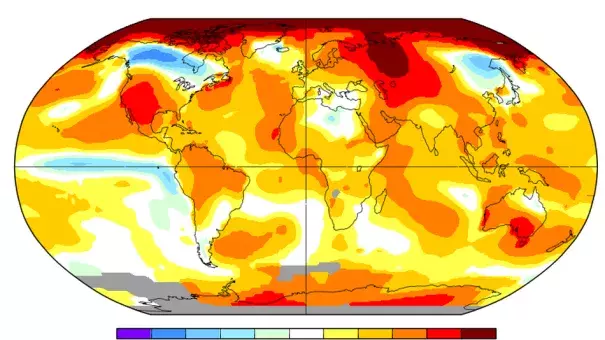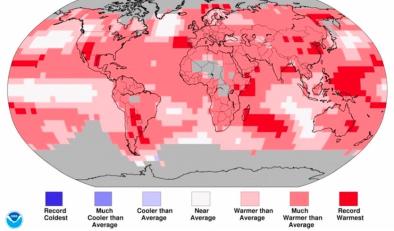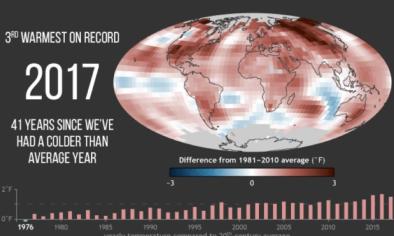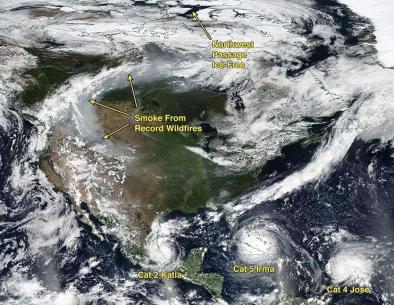2017 will be one of Earth's top 5 warmest years, scientists say

This year will almost certainly rank as one of the planet's top five warmest years on record, according to new data from the National Oceanic and Atmospheric Administration (NOAA) and NASA. In fact, the top NASA climate scientist reported Monday that 2017 is likely to be the second-warmest year on record, behind 2016, which in turn displaced 2015 from the top spot.
NOAA, on the other hand, predicts that, barring an unforeseen, large-scale cold snap, this year will rank as the third-warmest year in its database. These two science agencies use different methods to rank years, but base their information on similar underlying data comprised of thousands of surface weather stations and buoys at sea.
...
NOAA found the year is tracking toward the third-warmest year since reliable thermometer records began in 1880, according to a statement from the agency. The warmest year in NOAA's database was also 2016, when global warming combined with a strong El Niño event to push global average surface temperatures to new heights. El Niño events are characterized by milder than average ocean temperatures in the tropical Pacific Ocean, which can trigger a chain reaction of events that alter weather patterns worldwide. These climate events also add heat to the ocean and atmosphere.
Even in the absence of El Niño, though, 2017 managed to stay incredibly warm, as far as average surface temperatures go. According to NOAA, the year-to-date has had a global average temperature anomaly of 0.84 degrees Celsius, or 1.51 degrees Fahrenheit, above the 20th-century average.
Although a La Niña event is now underway, featuring cooler-than-average seas in the tropical Pacific Ocean, global average temperatures are in rare territory. Over time, global warming has caused both El Niño and La Niña years to become milder, making it more and more difficult to have a cooler-than-average year.
In fact, the last cooler-than-average month on Earth was back in February of 1985. This means that anyone under the age of 32 has never witnessed a cooler-than-average month, at least when compared to a 1961-1990 baseline.
Related Content






